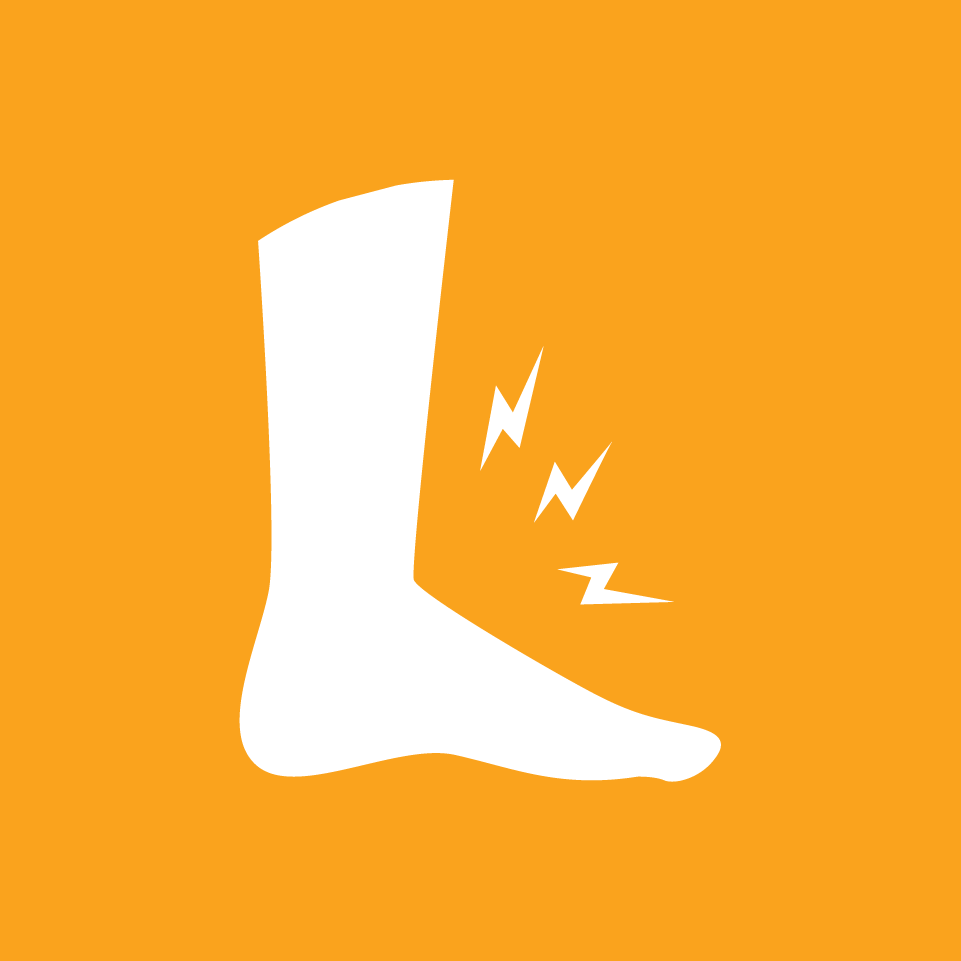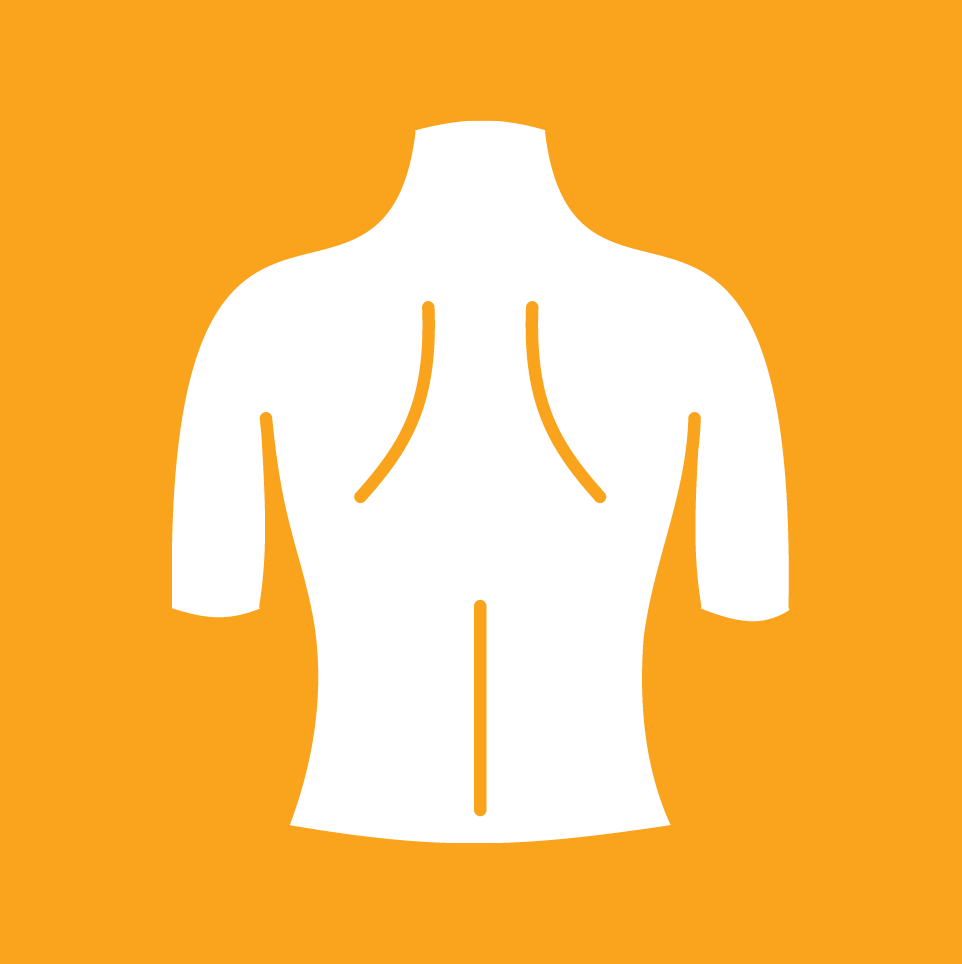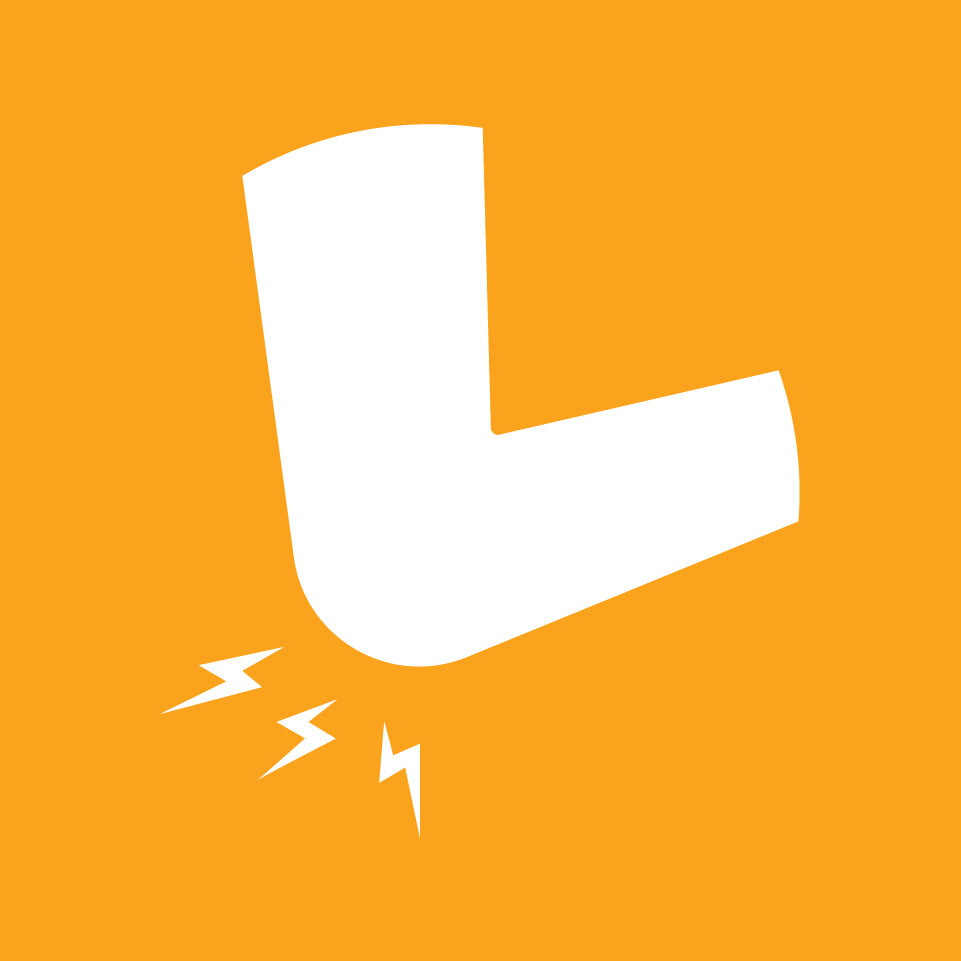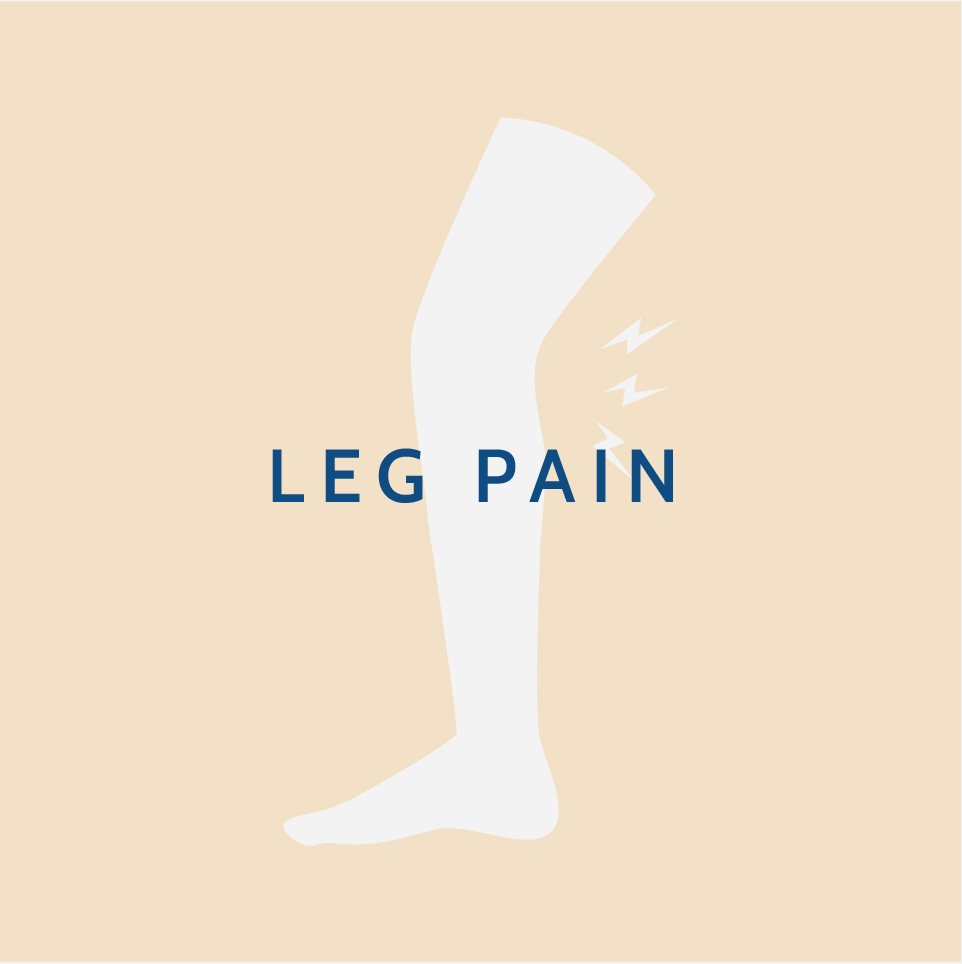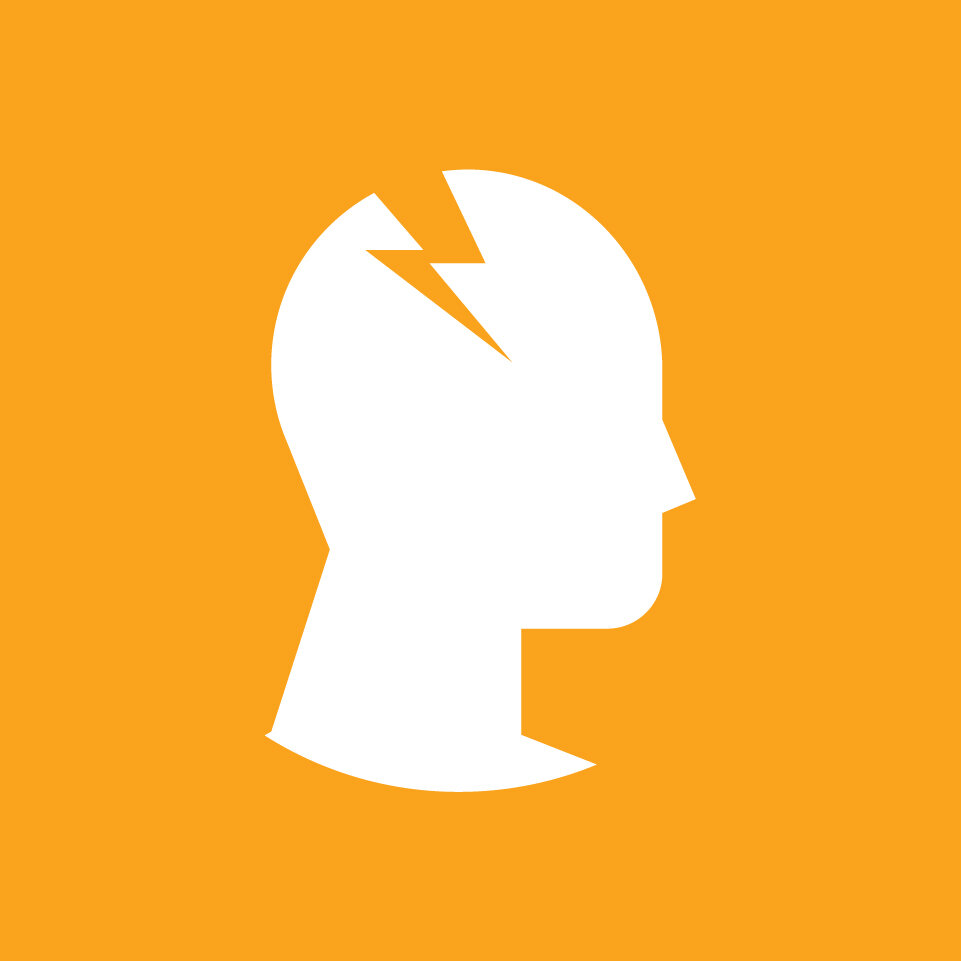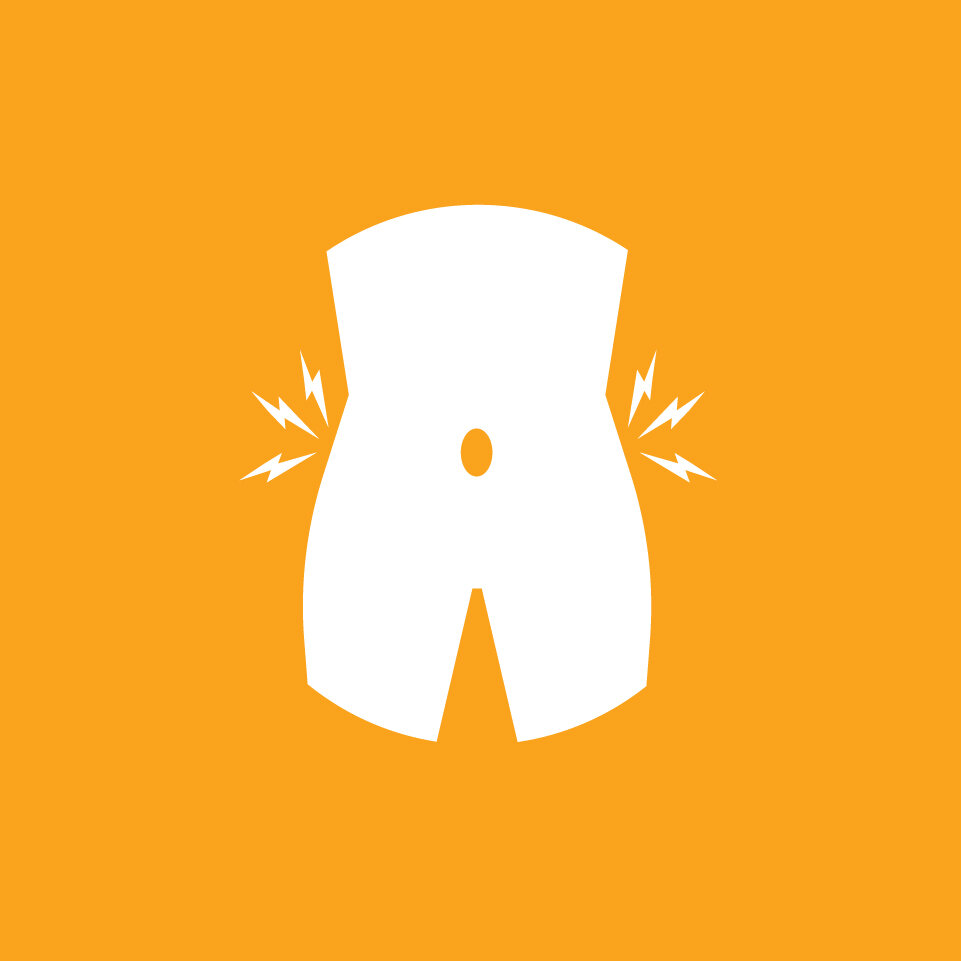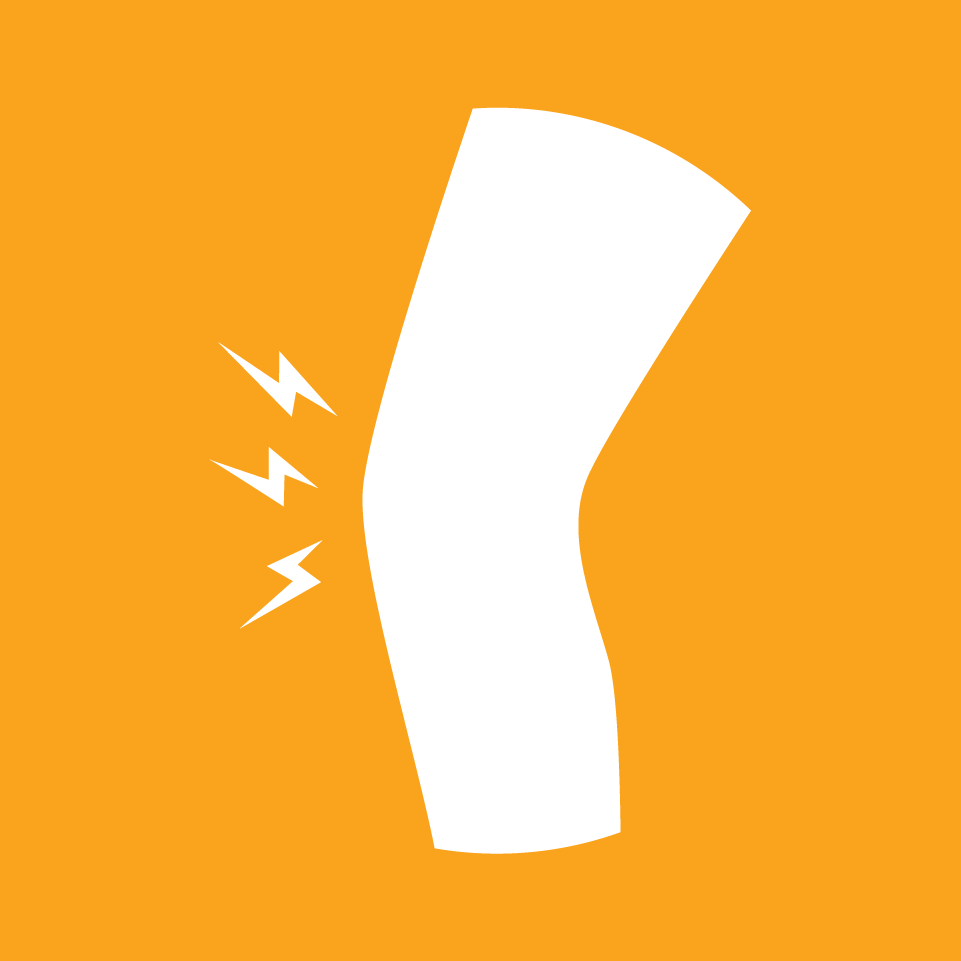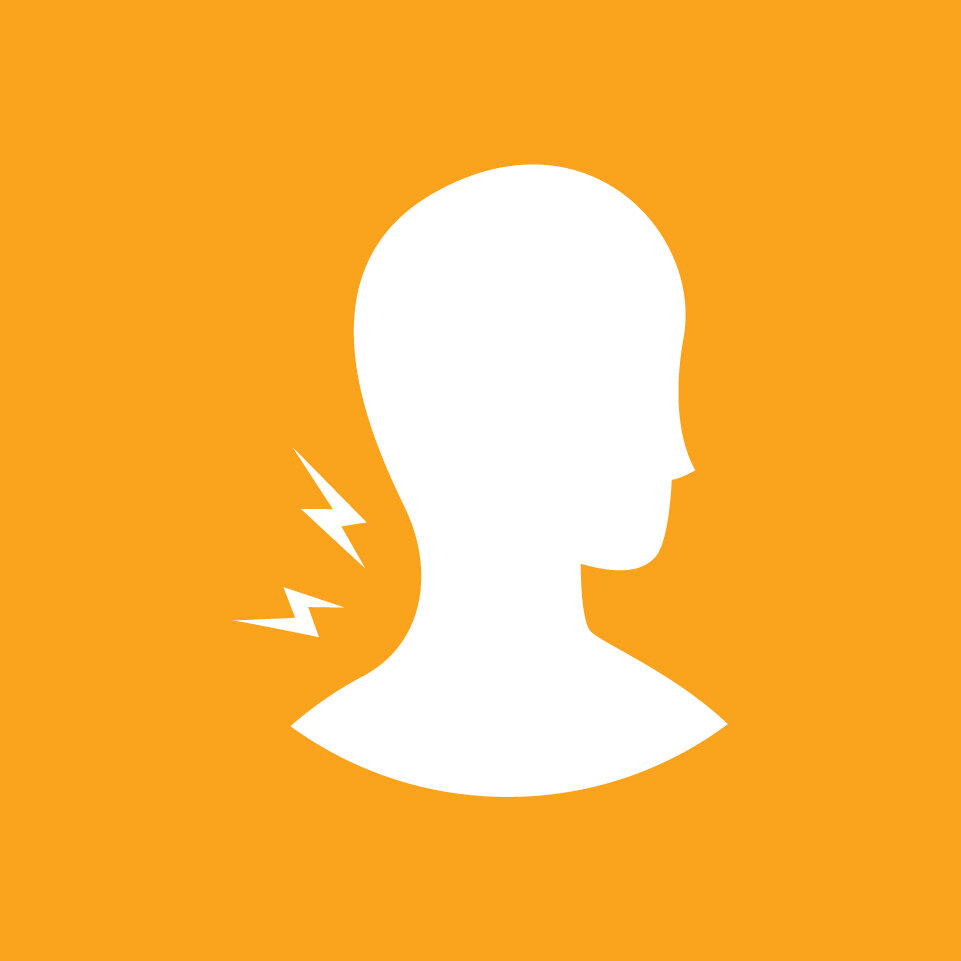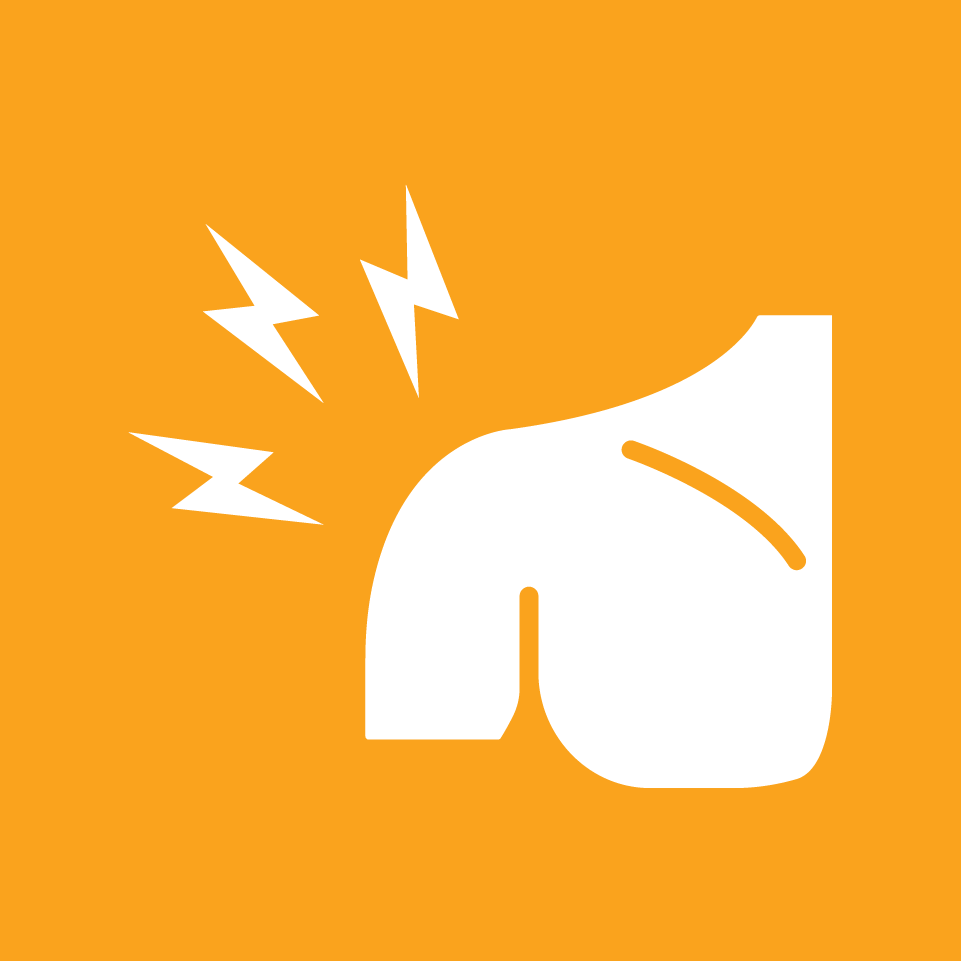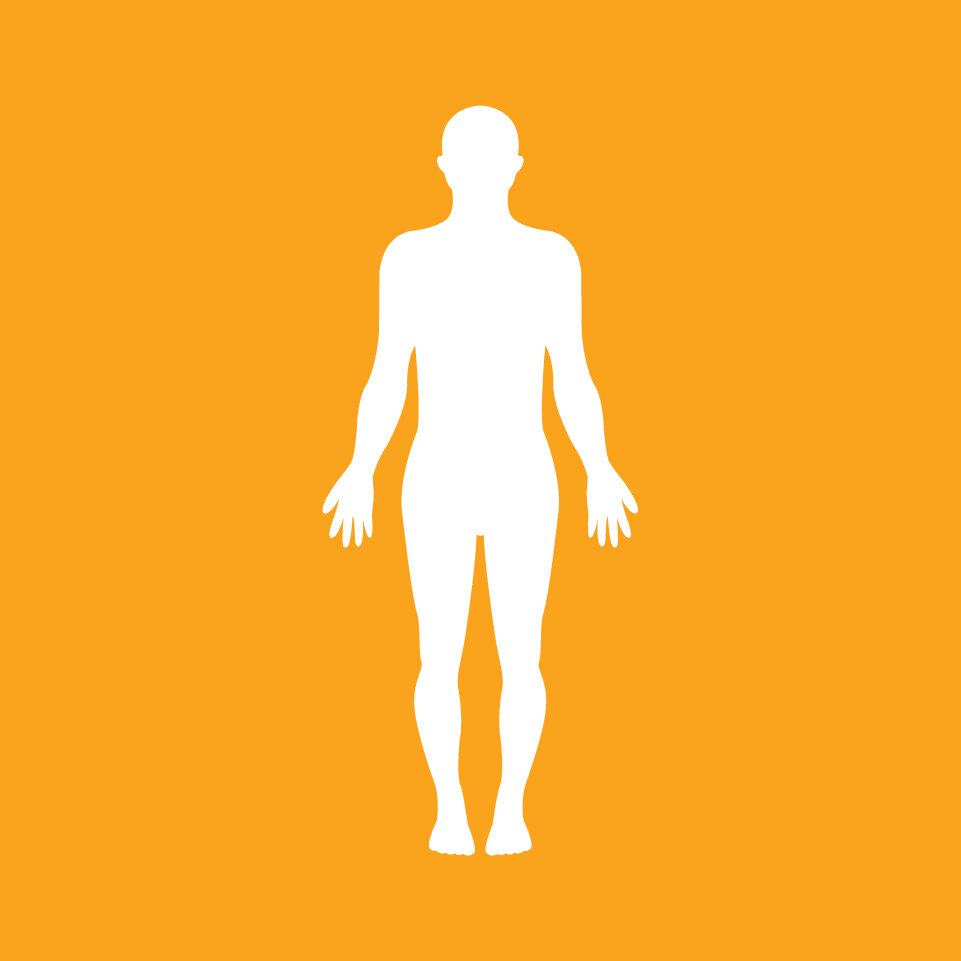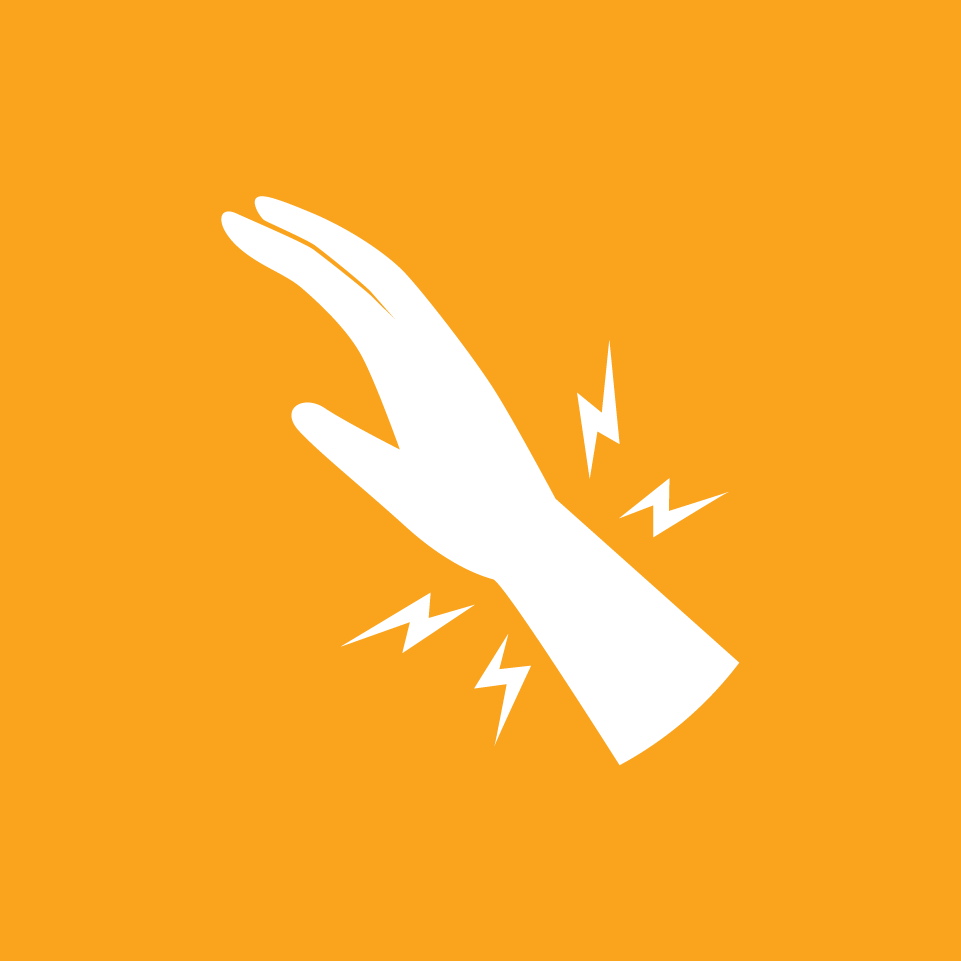Why does my leg hurt?
Pain in the upper leg and lower leg are common problems. Leg pain can present itself as a sharp, stabbing sensation or simply a dull ache. Sprains and strains are common causes of leg pain, often from overuse of the leg muscles during sports or other exercise. Pain in the quadriceps, groin, and hamstrings are especially common in athletes who rely on speed in their sport such as sprinters, soccer players, football players, rugby players, lacrosse players, and basketball players. Though quite common, these muscular injuries are often easily treatable by a physical therapist. Other areas in the upper leg and lower leg that are susceptible to pain are the calves, shins, and knees.
Symptoms of leg pain:
Pain when stretching or flexing thigh muscles
Broken blood vessels on leg
Bruising on the leg
Leg swelling
Weak legs
Muscle spasms in the leg
Possible reasons for leg pain:
Atherosclerosis
Peripheral arterial disease (PAD) is known as a condition where by the blood flow in the limb arteries are obstructed. Commonly, the legs are the most affected. These arteries are obstructed due to plaque deposits that restrict blood flow through the peripheries. Although blood flow may be also restricted by deep vein thrombosis, which may be a blood clot that occurs in the periphery of the limbs. Most patients are asymptomatic, but may experience intermittent claudication (pain on walking). Common symptoms of PAD include pain during walking and rest, skin ulcers, cramping, aching, clubbing of the finger or toenails, cold skin, blue tinged skin, and slow blood refill. Thus, there is a lack of blood flow to remove anaerobic metabolites that cause a pain sensation when built up. Critical limb ischaemia occurs when the blood flow reduction is so severe that it causes pain on rest or loss of tissue (ulceration or gangrene).
Supervised exercise programs have been recommended as first line therapy for treatment of claudication. Recent evidence demonstrates benefits of exercise training even among those patients with PAD who do not have claudication. Exercise programs combined with risk factor modification offer the possibility of altering the clinical trajectory of PAD. The goals of comprehensive prevention strategies including exercise are threefold: 1) to reduce limb symptoms; 2) to improve exercise capacity and prevent or lessen physical disability; and 3) to decrease the occurrence of cardiovascular events.
Deep Vein Thrombosis
Deep Vein Thrombosis usually occurs in the legs but can also be present in other extremities, and can be very serious. Blood clots in the veins can break loose, travel through the bloodstream and lodge in the lungs – blocking blood flow. This, often life-threatening condition, is known as a pulmonary embolism.
DVT can be caused by a recent surgery or injury, medical condition, or could be an inherited condition. Medical conditions that can increase your risk of developing a blood clot are:
Cancer
Increased age
Obesity
Pregnancy
Chronic venous insufficiency
Physical therapy is a method used to manage or decrease the risk of occurrence of DVT by improving the circulation deep in your veins. Our therapists work with patients to improve circulation by teaching them how to perform exercises that improve range of motion. We also recommend and provide compression garments that encourage circulation.
Medical-grade compression stockings provide graduated pressure that is firmer at the bottom of the leg and becomes less at the top of the garment. Because gravity makes it difficult for blood to flow in an upward direction, the graduation of pressure provided by the compression garments aid in improving blood flow back to the heart.
Sports injuries
Sports injuries have laid off many athletes for seasons, games, and worse, careers. Injuries are actually pretty common while participating in competitions, organized sports, fitness activities, or training exercises. Poor training methods, lack of conditioning, and inadequate warm-up are a few of the causes of sports-related injuries. Coping with these kinds of injuries often calls for physical rehabilitation. Physical therapy helps people regain strength and movement in parts of their body after an injury. Physical therapy can also help someone manage pain and prevent permanent damage and recurring problems. Each sport carries its own risk of injury for its players. Physical therapists are trained to help patients recuperate following an injury. As part of physical therapy, they can teach stretches, exercises, and techniques using specialized equipment to solve problems.
Physical therapists need to identify and understand the injured structure and the extent of the injury before planning on treating it. The rehabilitation of an injured player should carefully and meticulously be evaluated regularly. Injuries are time-dependent, meaning that the normal healing process of the body follows a pattern of the acute phase, subacute phase, and chronic phase. The acute phase involves the R.I.C.E. (Rest-Ice-Compression-Elevation) notion, which lets healing take place and controls inflammation. The subacute phase is a control motion phase. The chronic phase is also a return to function phase in which the athlete gradually returns to pre-injury workout schedules.
Arthritis in the leg
If you're tired of relying on medication to manage your arthritis pain, or the drugs simply aren't doing the job as effectively as they used to, it may be time to consider other arthritis remedies. Physical therapy can help manipulate damaged joints to make them more mobile — and therefore help you to become more active.
While there's no cure for arthritis, joint pain and other arthritis pain symptoms can often be managed successfully with a combination of therapies. Here are some options to consider:
Physical therapy
Occupational therapy
TENS therapy
Diathermy
Massage
Osgood-Schlatter disease
Osgood-Schlatter disease is treated conservatively. This typically involves limiting exercises, sports, or physical activities that cause pain—often for weeks or months—until the pain and swelling subside. This should then be followed by a strength-conditioning program overseen by a licensed physical therapist.
Based on the evaluation, the physical therapist can design a targeted exercise program to effectively treat Osgood-Schlatter disease. This may involve:
Stretching exercises
Strengthening exercises
Balance and coordination exercises
Pain control
Ultimately, the best treatment for Osgood-Schlatter disease is an active exercise program that includes stretching, strengthening, and mobility. Passive treatments like heat, ice, or taping may feel good, but they do little to improve the underlying condition. Most cases of Osgood-Schlatter disease are self-limiting and resolve on their own without treatment. Those that involve severe pain or limping may take 12 to 24 months to fully resolve. To speed recovery, it almost always helps to have an informed exercise plan designed to strengthen and stabilize the knee. By working with a physical therapist, you're bound to recover quicker than sitting on the sidelines at home.
Tendinitis
Usually, your doctor can diagnose tendinitis during the physical exam alone. Your doctor may order X-rays or other imaging tests if it's necessary to rule out other conditions that may be causing your signs and symptoms. The goals of tendinitis treatment are to relieve your pain and reduce inflammation. Often, taking care of tendinitis on your own — including rest, ice and over-the-counter pain relievers — may be all the treatment that you need. You might benefit from a program of specific exercise designed to stretch and strengthen the affected muscle-tendon unit. For instance, eccentric strengthening — which emphasizes contraction of a muscle while it's lengthening — has been shown to be a very effective treatment for many chronic tendon conditions, and is now considered first line treatment.
Gout
Gout is a metabolic disorder; however, because the clinical presentation closely resembles arthritis, gout is also classified as a form of crystal-induced arthritis. There are three main types of gout, all of which usually begin monoarticularly at the first metatarsophalangeal joint and are characterized by sudden pain, swelling, and redness.
Physical therapy management of gout falls under preferred practice pattern 4E: Impaired joint mobility, motor function, muscle performance, and range of motion associated with localized inflammation. The physical therapist should be aware that any patient with a history of gout, hyperuricemia, and/or a septic joint presentation should be referred for medical evaluation prior to treatment. During acute exacerbations the physical therapist should focus on reinforcement of management program and splinting, orthotics, or other assistive devices to protect the affected joint(s). During intercritical phases physical therapists may offer assistance with maintenance of ROM, strength, and function. The physical therapist can also assist the patient in the creation of a suitable exercise routine and keeping their weight under control.
Nerve damage in the leg
Research has shown that strengthening exercises for peripheral neuropathy moderately improve muscle strength in people with PN. In addition, exercises to help peripheral neuropathy, when done regularly, may reduce neuropathic pain and can help control blood sugar levels. A comprehensive physical activity routine includes four kinds of activities:
Aerobic Exercise
Flexibility Exercise
Strength Training Exercise
Balance Exercise
Physical therapy may be helpful in maintaining strength, mobility, and function regardless of the underlying cause of Peripheral Neuropathy (PN). Patients with diabetic neuropathy may also benefit from physical therapy, however, diabetic neuropathy patients must also tightly control their blood sugar levels to prevent major fluctuations. The objectives of physical therapy include:
Maintaining and improve functions via a range of motion – passive range of motion exercises consist of progressive stretching and self-stretches
Strengthening muscles – this includes exercising against increasing resistance, use of weights, and isometric exercise
Balance training provides stability and prevents falls
Physical therapists can also recommend braces and/or splints to enhance balance and posture. Splinting is often used in the treatment of compression mononeuropathies, such as carpal tunnel syndrome.
Muscle cramps (charley horse)
Muscle spasms or cramps are fairly common and most frequently occur in the leg muscles. But any muscles, including your back, hands, feet, or toes can spasm. Muscle spasms can last anywhere from a few seconds to 15 minutes.
The type of treatments required for muscle cramps depends on what is causing them. If you're having occasional muscle cramps from physical activity or overusing certain muscles, you can usually take care of the cramps yourself. Simply stopping the activity will stop the cramping. If the cramps continue, stretching the cramping muscle - although painful - should release the tension of the muscle. For example, if it is your calf muscle that is cramping, stand facing a wall or solid object that you can hold on to for balance. Keeping your heel of the sore leg as close to the floor as possible, tilt your body (slowly) to the wall or object, stretching the calf muscle. If you're lying in bed when the cramping starts, you can try pointing your toes straight up towards the ceiling, or grab hold of your toes and pull your foot up towards you, keeping your knee bent slightly.
Some people find that using ice packs can help relax the tense muscles, others have better luck with heat such as from heating pads, warming packs, even warm towels. Be careful when applying ice or heat to a sore part of your body. Ice should never be held directly on the skin. Ice should always be buffered with at least one layer of cloth. Heating pads can get very warm and can cause burns, so be sure to monitor the heat level and keep a layer of fabric between the heat and the skin. Massage may help as well, although it can be painful as the knot is being worked out. If the cause of the cramping is dehydration, then fluids with electrolytes (sports drinks, for example) are essential to balance the fluid loss.
For athletes who experience a lot of cramping good nutrition is important. Adequate fluid and electrolytes may help limit the cramping. This could mean meeting with a dietitian to discuss diet and eating habits.
It's also important to stretch correctly. It is best to stretch after a muscle is already warmed up. Don't stretch quickly. Stretch slowly and hold each stretch for 30 seconds. Any shorter than 30 seconds and there's no benefit. Some experts suggest that athletes continue to stretch daily. This may keep the muscles flexible. Also remember to stretch after the activity to allow the muscles to cool down.
Other important tips include staying hydrated; drink enough fluids to keep your body's electrolytes from depleting - but don't overdo the fluids either. Finally, don't overdo the exercising, especially in hot weather.
Acute leg injury
Injuries to the feet and lower legs are especially troublesome, because they can quickly slow us down and prevent us from performing the daily activities we enjoy. Our lower legs are made up of numerous muscles, ligaments and joints, and when one or more of these is out of commission, it can lead to extreme pain. In most cases, lower leg and foot injuries can be treated effectively with non-surgical options such as physical therapy.
Whether you are recovering from surgery after a fracture, have a severe sprain, or just have ongoing pain for an unknown reason, the best path to recovery is to strengthen the problem areas. This is done most effectively through a series of targeted stretches and related exercises. During physical therapy, the therapist begins with a thorough evaluation of the lower leg or foot pain. The goal of this evaluation is to identify which areas need to be worked on, so they can create an individualized conditioning program designed to bring you back to normal. This program usually consists of several exercises, some done with the therapist, and some performed on your own. As your lower leg or foot gets stronger, additional exercises are added to build on previous sessions. For this reason, it is important for therapy patients to stay consistent and miss as few visits as possible.
Slipped disc (herniated disc)
A herniated disc can cause pain, tightness, numbness, weakness, or tingling in the neck, back, arms, or legs. If the bulging or leaking disc pushes on a nearby nerve, pain or muscle weakness may result. If the bulging or leaking disc does not push on a nerve, pain or disability may not occur. Although back or neck pain can be caused by a herniated disc, other factors may be involved. Your physical therapist can test for and rule out other possible conditions. If a herniated disc is severely pressing on a nerve, or is pressing on the spinal cord, surgery may be needed to immediately relieve that pressure. Your physical therapist can help determine whether either of these conditions is occurring, and will work closely with your physician and surgeon to determine the correct treatment.
Your physical therapist will work with you to design a specific treatment program that will speed your recovery, including exercises and treatments that you can do at home. Physical therapy will help you return to your normal lifestyle and activities. The time it takes to heal the condition varies, but results can be achieved in 2 to 8 weeks or less, when a proper posture, pain-reduction, stretching, and strengthening program is implemented.
Varicose veins
With nearly half the adult population experiencing some form of venous insufficiency during their lifetimes, varicose and spider veins are a common occurrence. The frequency and symptoms of which are often exacerbated from working in professions that require prolonged standing or sitting for hours at a time. Our therapists will combine manual therapy with simple exercises to help minimize the development of new varicose veins and alleviate discomfort from existing ones.
Dehydration
You have commonly heard the phrase, “MAKE SURE YOU ARE DRINKING ENOUGH WATER.” Hydration is important for the body not only as a daily practice, during physical activity, but also plays an important role in the aid of weight loss. The human body is made up of approximately 50-75% water. The percentage of water varies based on age and gender. Fluid intake is essential to good health. Water is needed to regulate your temperature, maintain joint health and to deliver essential vitamins and minerals. Dehydration leads to impaired nerve and muscle function due to the imbalance of sodium and potassium within the body. Brain and muscle function become impaired causing decreased muscle coordination and impaired athletic performance. Early signs and symptoms of dehydration include headaches, dry mouth, chills, dry skin, excessive thirst, and fatigue. The color of one’s urine is a good indicator of proper hydration. Improper hydration will cause your urine to become a dark yellow. Signs of worsening dehydration are increased body temperature, heart rate and body temperature. If you become confused, have vision disturbances and difficulty breathing seek immediate medical attention. Your risk of dehydration increases when you sweat excessively, increase your exercise intensity and duration, when the temperature is high and at high altitudes.
Overuse of leg muscles
Overuse injuries can occur when a muscle in or around the thigh is worked too hard for too long, or when a person does not warm up before exercise. The pain tends to get worse with time. Eventually, the pain may occur even when a person rests the injured area. The main sign of an overuse injury is pain following exercise or intense physical activity.
A physical therapist helps take care of patients in all phases of healing, from initial diagnosis through the restorative and preventive stages of recovery. Physical therapy may be a standalone option, or it may support other treatments. Some patients are referred to a physical therapist by their doctor, but other seek therapy themselves. Whichever way a patient come to a physical therapist; they can expect to:
Undergo a physical exam and evaluation, including a health history and certain testing procedures, including evaluation of posture, movement and flexibility, and of muscle and joint motion and performance
Receive a clinical diagnosis, prognosis, plan of care and short- and long-term goals
Receive physical therapy treatment and intervention based on the therapist’s evaluation and diagnosis
Receive self-management recommendations
Patients often train with a physical therapist in exercises that they can do at home, to help them function more effectively.
Torn leg muscle
Muscle strain, muscle pull, or even a muscle tear refers to damage to a muscle or its attaching tendons. You can put undue pressure on muscles during the course of normal daily activities, with sudden heavy lifting, during sports, or while performing work tasks. Muscle damage can be in the form of tearing (part or all) of the muscle fibers and the tendons attached to the muscle. The tearing of the muscle can also damage small blood vessels, causing local bleeding, or bruising, and pain caused by irritation of the nerve endings in the area.
Your physical therapist will work with you to develop a treatment plan to achieve your specific goals. Your plan may include:
Patient education
Pain management
Range-of-motion exercises
Manual therapy
Muscle strengthening
Functional training
Shin splints
“Shin splints” is a vague term, used to refer to pain in the lower part of the shin bone. It is vague because pain on the shin can mean pain on the outside of the leg, inside of the leg, pain from a stress fracture, or pain from compartment syndrome. The medical term for shin splints is Medial Tibial Stress Syndrome (MTSS). This term is accurate as it explains that the pain and discomfort is located on the inside of the tibia and is related to stress on the bone. Classic symptoms of MTSS are pain and discomfort in the lower leg/shin from repetitive running on hard surfaces, or excessive use of the foot flexors. The pain is debilitating enough to prevent the athlete from weight bearing activities, such as running, jumping, and dancing.
There are several techniques in physical therapy that can be used to treat shin splints. Because this is an overuse injury, avoiding the aggravating activity, if possible, will help with recovery. Icing the area for about 10 minutes a few times each day will help decrease the pain as well. The affected muscles typically become tight with this type of injury, so gently stretching them will help with pain and recovery. The physical therapist may also use a Kinesiotaping technique to provide some arch support as well as manual techniques such as soft tissue massage or Astym to help the shin muscles heal. Dry needling can be used to relieve trigger points that might be present with shin splints.
The physical therapist will likely also prescribe a home exercise program to strengthen muscles to prevent shin splints from recurring. Hip strengthening for rotational motions and abduction (lifting the leg away from the body toward the side) are used to decrease the stress on the lower part of the leg. There are also exercises that can be performed to strengthen the muscles on the bottom of the foot to provide better arch support. Body mechanics for squatting, jumping, running, and walking will likely be assessed and corrected where needed. If necessary, the physical therapist might also recommend a modification to footwear to provide better support.


